Blog
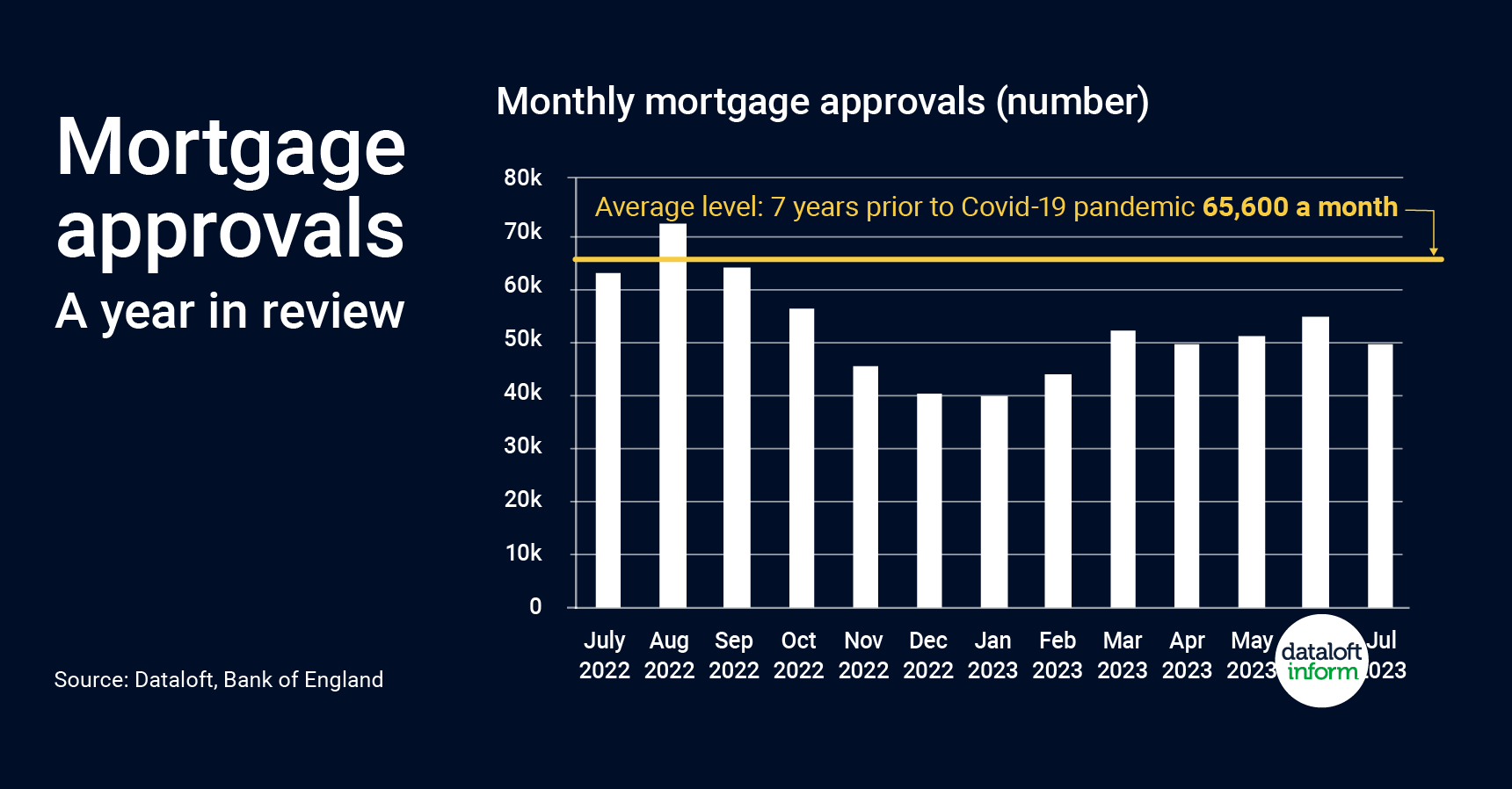
In the world of residential property sales, market trends and activity are often closely linked to mortgage approvals. These approvals serve as a pivotal leading indicator, offering insight into the health and direction of the housing market. As we delve into the dynamics of the housing market in 2023, it's evident that mortgage approvals play a crucial role in predicting future trends. In this article, we'll explore why mortgage approvals are an essential indicator and analyse their recent patterns to understand what they suggest for the coming months.
Mortgage Approvals as Leading Indicators
Mortgage approvals can be seen as the proverbial canary in the coal mine for the residential property market. They typically lead trends in property sales activity by approximately three months. This means that changes in mortgage approvals today can give us a sneak peek into the future health of the housing market. Understanding this lag effect is crucial for market analysts, policymakers, and potential homebuyers and sellers.
The Current Landscape
As of the beginning of 2023, we've observed an uptick in the number of mortgage approvals. However, it's important to note that these approvals still remain below the usual levels we saw in the years leading up to the Covid-19 pandemic. In the year ending July 2023, monthly mortgage approvals averaged 51,600, representing a 21% decline from the levels recorded in the seven years preceding the pandemic. This shortfall, while not alarming, raises questions about the resilience and future prospects of the housing market.
Economic Factors at Play
To understand the factors influencing the mortgage approval landscape, we must consider broader economic conditions. Inflationary pressures have been a significant concern for many sectors of the economy, including the property market. However, recent inflation data has provided some relief and optimism. Projections also suggest that interest rates are expected to peak in the current year and start a gradual decline in 2024. These developments are pivotal for prospective homebuyers, as lower interest rates can make mortgages more affordable, potentially leading to increased market activity.
The Turnaround Point
Mortgage approvals reached their lowest point in December 2022 and January 2023. This dip was influenced by a combination of seasonal factors and heightened uncertainty surrounding inflation and interest rates. Seasonally, the holiday season often witnesses a slowdown in the property market, as people are preoccupied with festivities rather than property transactions. Moreover, the spectre of rising inflation and interest rates led to cautious behaviour among both buyers and lenders.
Looking Ahead
Given the close relationship between mortgage approvals and residential sales activity, these indicators are vital for anticipating market movements. As we monitor the trajectory of mortgage approvals in the coming months, we can expect them to serve as a leading indicator for any potential shifts in the housing market.
The recent uptick in approvals, coupled with optimistic inflation and interest rate projections, suggests that the market may be poised for an uptick in activity. However, it's essential to remain vigilant and continue tracking these indicators to make informed decisions regarding property investments, whether you're buying, selling, or investing.
In the ever-evolving world of the housing market, mortgage approvals stand as a valuable compass, guiding us towards future market trends. While they have recently shown signs of improvement, we should bear in mind that they are still recovering from the shocks of the pandemic and economic uncertainties. As inflationary pressures abate and interest rates begin to recede, mortgage approvals are likely to provide the first glimpse of a potential resurgence in market activity. So, keep a close eye on these approvals if you want to stay ahead in the property game.
- Details
- Hits: 451
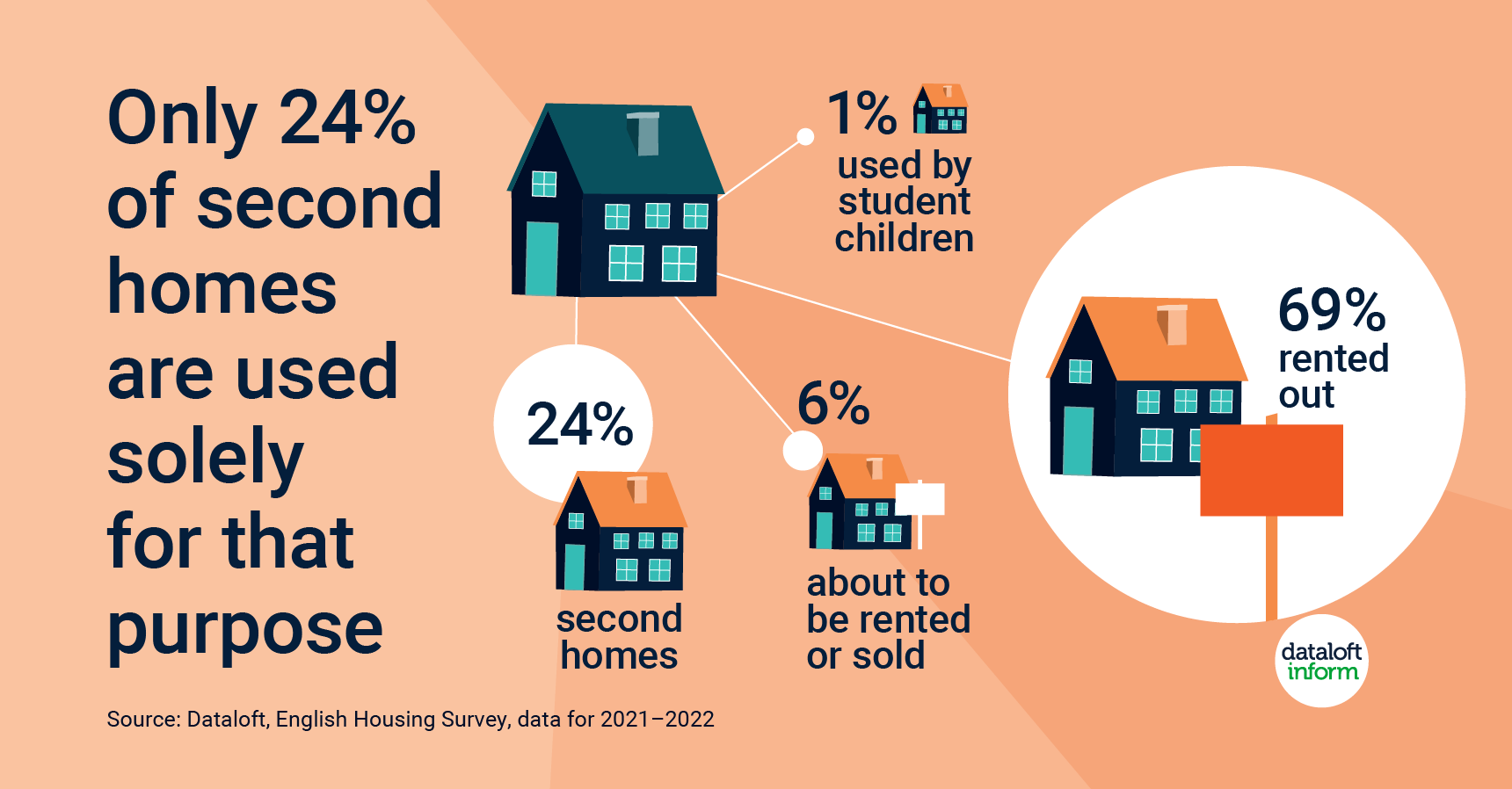
The concept of a "home away from home" has taken on new dimensions in recent years, as evidenced by the latest data from the English Housing Survey. This comprehensive study has revealed intriguing insights into the prevalence and purpose of second homes in the UK. The figures, drawn from the survey conducted between 2021 and 2022, shed light on the evolving trends in property ownership and usage.
According to the survey, the number of second homes in the UK has reached a staggering 3.3 million. This significant figure raises questions about the factors driving this phenomenon and the implications it holds for the housing market, rental landscape, and society at large.
A noteworthy revelation from the data is that a substantial 69% of these second homes are rented out, showcasing a growing inclination toward property investment, despite all the negative press. This trend reflects the desire of many individuals to capitalize on the property market's potential for generating additional income streams. The allure of a consistent rental income has propelled a considerable majority of second homeowners to open their doors to tenants, which is a good thing and effectively blurring the lines between the traditional roles of homeowners and landlords.
Further analysis uncovers that a smaller fraction, accounting for 6% of the total second homes, are on the brink of being rented out or sold. This suggests a dynamic nature of property ownership, with a portion of second homes acting as transitional assets. Homeowners in this category are perhaps navigating between various investment options, weighing the benefits of continued ownership, rental revenue, or a profitable sale.
Interestingly, the data also highlights that a mere 1% of second homes are designated for use by student children. This could reflect the limited number of households that cater to this particular purpose, as students often seek accommodations closer to their educational institutions. The minimal presence of student-centric second homes could also reflect the availability of purpose-built student housing in many university towns.
The remaining 24% of second homes, as per the survey, are reserved exclusively for the use of their owners. This category underscores the traditional notion of a second home – a private sanctuary where individuals and families retreat to recharge, away from the hustle and bustle of daily life. These properties not only offer a physical escape but also serve as potential investments in lifestyle enhancement and future retirement plans.
The implications of these findings are multifaceted. The rise of second homes being rented out transforms the housing landscape, impacting both the availability of long-term rental properties and the dynamics between landlords and tenants. Additionally, the fluidity observed in the allocation of second homes for potential rental or sale suggests a market in constant flux, driven by economic conditions and investment strategies.
As the housing market continues to evolve, policymakers, economists, and homeowners alike must consider the broader consequences of these trends. Questions about housing affordability, rental supply, and the cultural significance of homeownership are all brought into sharper focus by the data from the English Housing Survey. While the concept of a second home is far from new, its shifting roles and purposes underscore the ever-changing nature of property ownership in a modern society.
In conclusion, the latest insights from the English Housing Survey illuminate the diverse roles that second homes play in the lives of UK residents. With a majority being rented out, a portion in flux, and a small fraction dedicated to specific purposes, the second home landscape reflects both economic opportunities and personal aspirations. As the housing market adapts to these changing dynamics, a broader conversation about the meaning of home and its connection to financial goals emerges.
- Details
- Hits: 414
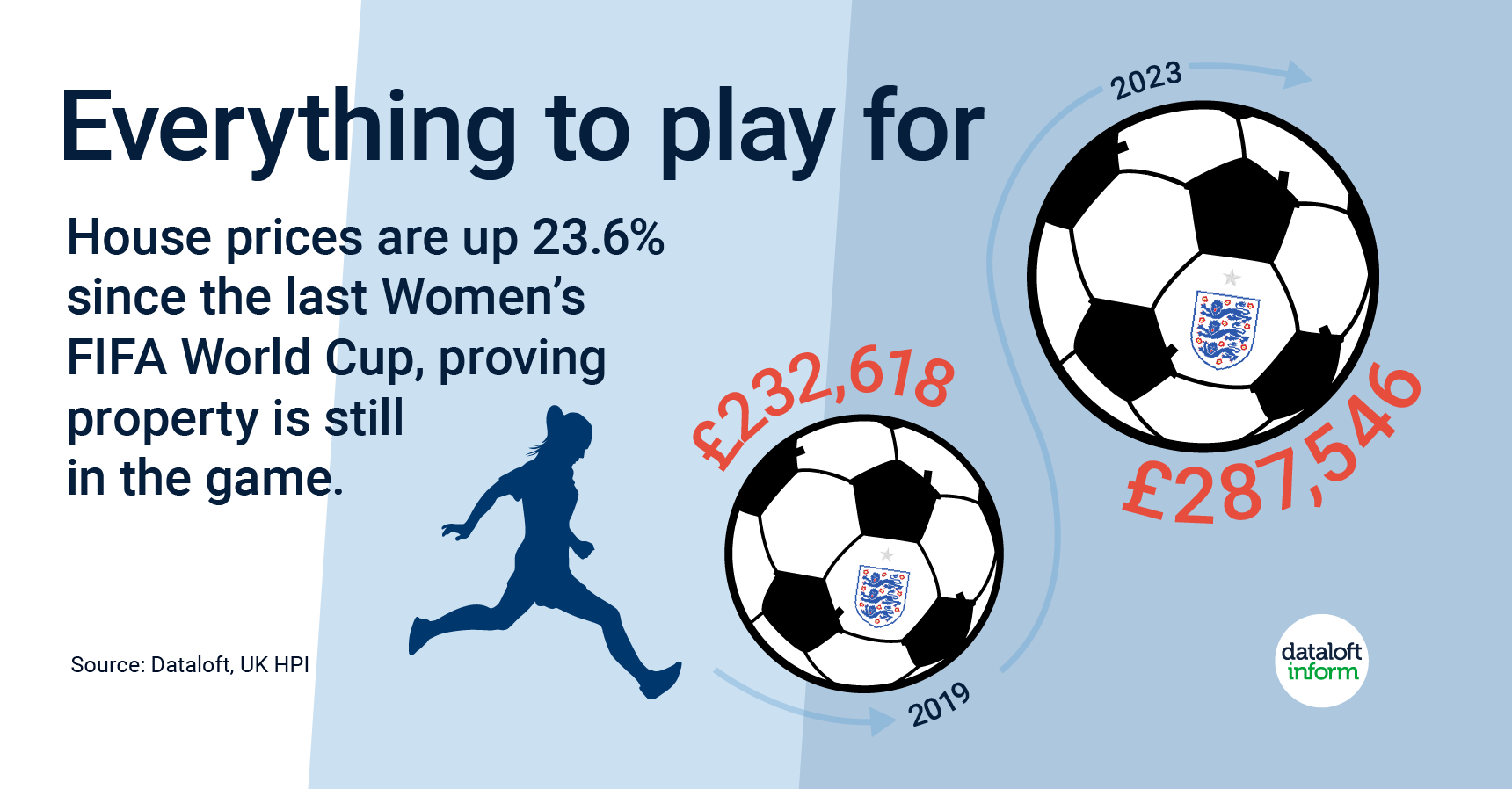
In the wake of the heartbreak witnessed in the World Cup final, the resilience and determination displayed by the Lionesses have transcended the boundaries of disappointment, inspiring a new era of sportswomen. This inspiration isn't limited to the professional stage, as the legacy of the EURO 2022 has blossomed, creating an astounding number of opportunities for women and girls to engage in grassroots football activities across England. Moreover, the ripple effects of this phenomenon extend beyond the realm of sports, influencing even the property market. Let's delve into these remarkable developments that are reshaping both the sports and the property market landscapes in England.
EURO 2022: Forging a Path for Women's Football
The EURO 2022 tournament left an indelible mark on the landscape of women's football in England. While the Lionesses may have faced disappointment in the World Cup final, their journey ignited a spark in the hearts of aspiring athletes. The legacy of EURO 2022 has been transformational, with the creation of more than 416,000 new opportunities for women and girls to participate in grassroots football. Schools, clubs, and communities have become vibrant hubs for nurturing talent and fostering the growth of women's football.
In a country where football holds a special place in the hearts of many, this surge of interest in women's football is more than a sporting trend—it's a cultural shift. The EURO 2022 legacy is igniting dreams and breaking down barriers, as young girls witness the accomplishments of the Lionesses and envision themselves making strides in the world of sports.
A Surprising Synergy: Women's Football and Property Prices
Beyond the sports arena, an unexpected connection has emerged between women's football and the real estate market. In the aftermath of the last Women's FIFA World Cup in 2019, property prices in the UK experienced a notable rise. Even in the face of recent market softening, the average house price has surged by an impressive 23.6%. This growth can be partially attributed to the cultural impact of women's football and the resurgence of interest in sports, igniting community engagement and fostering a sense of unity. The average house Price in Crawley for 2019 was £288,582 where as the average house price for August 2023 is £349,178.
Football, particularly in the UK, transcends mere entertainment—it's a collective experience that binds communities together. As spectators and participants come together to celebrate the beautiful game, they also contribute to the economic ecosystem, breathing life into local businesses and driving demand in the housing market.
The Enchanting Allure of Football
With an estimated 13.5 million individuals engaging in football in some capacity, it's evident that the sport's allure knows no bounds. From casual kickabouts in local parks to organized matches on community playing fields, football resonates with people of all ages and backgrounds. The sheer number of community playing fields in Great Britain—over 21,600, sprawling across more than 54,000 hectares—reflects the profound influence that football has on the nation's social fabric.
The Lionesses' journey is a testament to the potential of women's football to galvanize communities and inspire generations. As young girls lace up their boots and step onto the pitch, they're not just playing a game—they're embracing empowerment, teamwork, and the spirit of competition. These values transcend sports and become guiding principles in all facets of life.
In conclusion, the Lionesses' journey from heartbreak to inspiration showcases the profound impact of women's football on society. The EURO 2022 legacy has opened doors for countless aspiring sportswomen, while also breathing life into local communities and the property market. Football's unifying power continues to shape the cultural, economic, and social landscapes of the United Kingdom, fostering a sense of togetherness that goes far beyond the pitch. As the Lionesses pave the way, a new generation stands ready to embrace the beautiful game and all the transformative potential it holds.
Source: #Dataloft, UK HPI, Ordnance Survey, Magic League, England Football
- Details
- Hits: 450
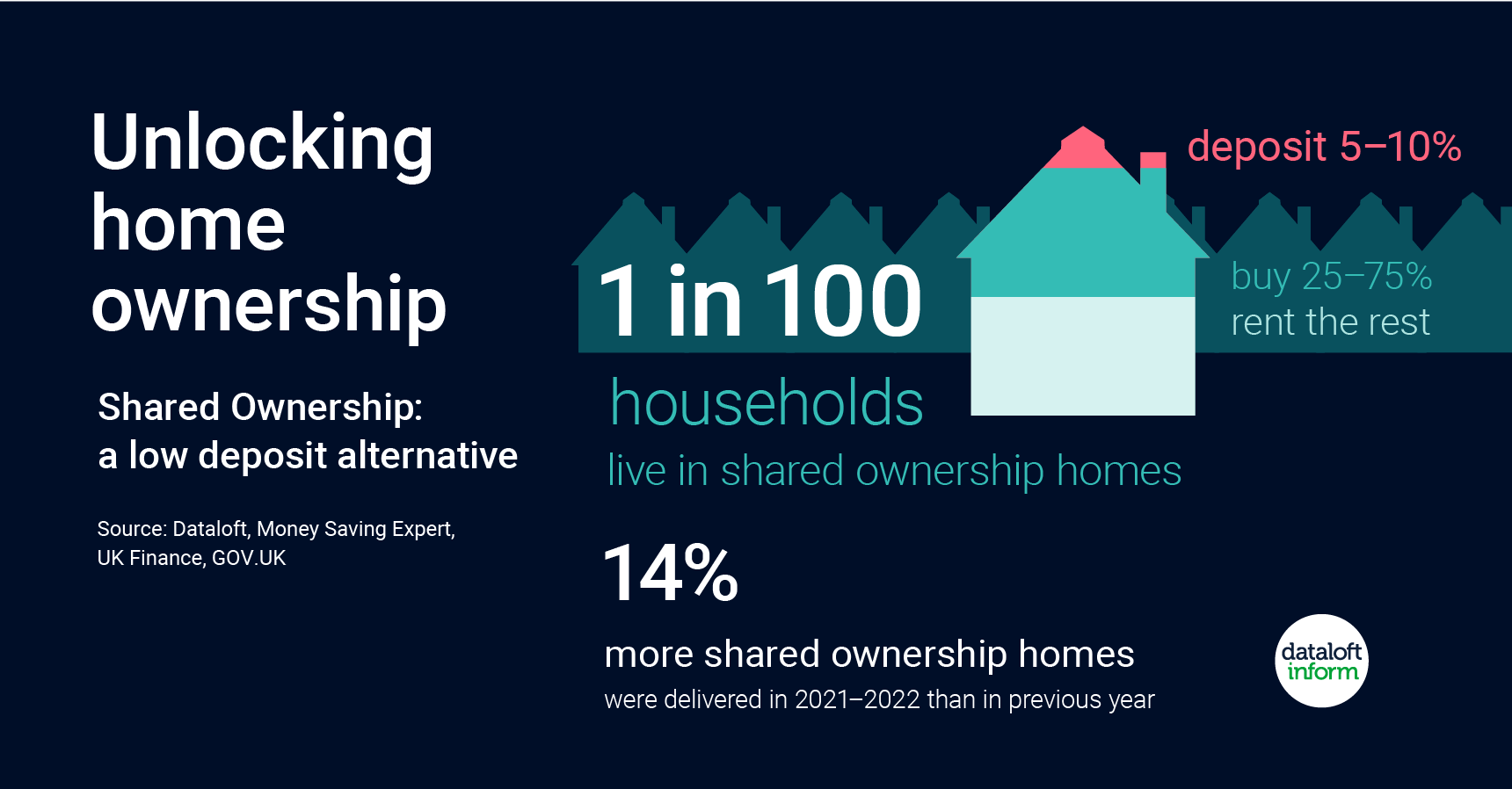
As the curtains draw on the Help to Buy scheme, the landscape of homeownership in the United Kingdom has undergone a noticeable shift. The need for a low-deposit solution to facilitate the dream of owning a home has gained prominence. With approximately 1 in every 100 households in the country residing in shared ownership homes, the concept has emerged as a promising avenue for those seeking to step onto the property ladder with limited upfront costs.
Shared ownership, a novel approach to homeownership, presents an attractive alternative for individuals and families who find themselves grappling with the challenge of gathering a substantial down payment. The scheme's mechanics are simple yet innovative: prospective buyers are offered the opportunity to purchase a share of their chosen property, typically ranging from 25% to 75%, while concurrently paying rent on the remaining portion. Over time, purchasers have the flexibility to gradually acquire additional shares until they eventually gain complete ownership of their home.
A defining feature that sets shared ownership apart from conventional routes is the remarkably reduced deposit requirement. In contrast to the staggering average deposit of 24% typically demanded from UK first-time buyers, shared ownership demands a more manageable deposit, often ranging between 5% and 10% of the share being acquired. This significant reduction in upfront financial burden makes shared ownership a palpable and financially viable option for individuals yearning to attain the status of a homeowner.
It is important to underscore that shared ownership is not an exclusive privilege reserved solely for first-time buyers. The eligibility criteria encompass a broader spectrum, extending the opportunity to those with a household income of £80,000 per annum or less (or £90,000 or less in London), who are unable to afford a residence that aligns with their needs and aspirations. This inclusivity, anchored in financial prudence, underscores the government's commitment to democratizing the experience of homeownership and making it accessible to a wider segment of the population.
Sources of data and expertise, including #Dataloft, Money Saving Expert, UK Finance, and GOV.UK, corroborate the viability and advantages of shared ownership. These reputable sources bolster the notion that shared ownership is not merely a stopgap measure but a bona fide pathway toward establishing a stable and fulfilling homeownership journey.
In conclusion, as the Help to Buy scheme concludes its chapter, shared ownership emerges as a beacon of hope for those seeking a low-deposit route to homeownership. Its dynamic structure, which enables incremental ownership acquisition while reducing the burden of a substantial deposit, positions shared ownership as an accessible and practical solution. By extending eligibility beyond first-time buyers and embracing a wider income bracket, the UK government underscores its commitment to empowering individuals to embrace the joys and responsibilities of homeownership. In the tapestry of UK housing, shared ownership is undoubtedly a thread woven with affordability, flexibility, and opportunity.
- Details
- Hits: 393
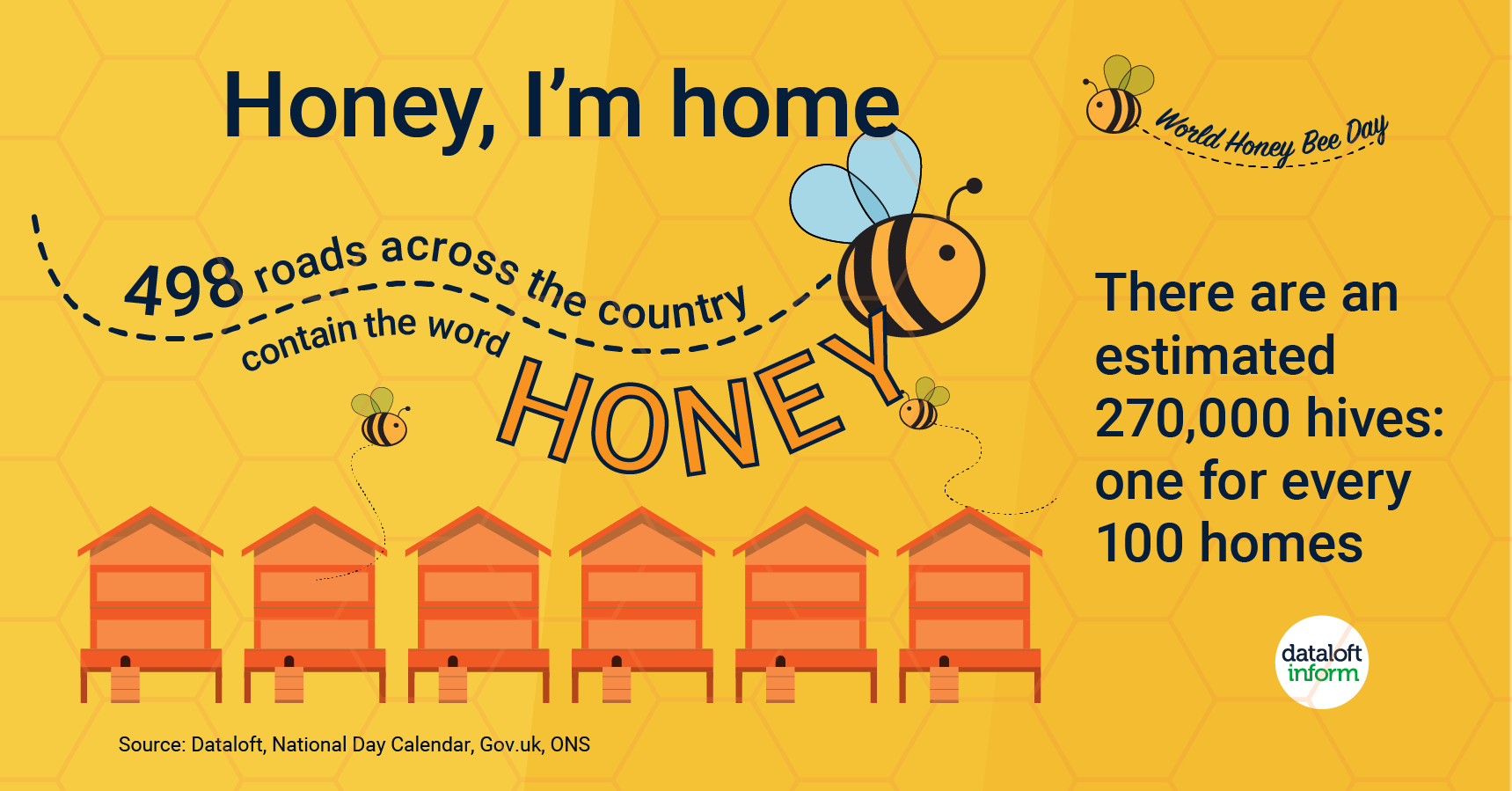
Every year, on the third Saturday of August, a sweet and vibrant celebration takes place around the world. World Honey Bee Day, dedicated to these incredible pollinators, brings together beekeepers, honey enthusiasts, and nature lovers alike. The event shines a spotlight on the importance of honey bees and their role in our ecosystem, while also encouraging actions to protect and support these remarkable creatures.
The Fascination with Bee-Related Addresses
As the world comes alive with the vibrant colours and scents of blooming flowers during the summer months, it's only fitting that many home addresses also feature bee-related names. Across the country, there are a remarkable 498 roads that proudly display the word 'Honey' in their names. These buzzing addresses not only add a touch of whimsy to our maps but also remind us of the intricate relationship between bees, nature, and our communities.
A Decade of Honey Bee Celebration
World Honey Bee Day, which began in 2009, has quickly grown into a global phenomenon. What started as a grassroots initiative has evolved into an annual event that brings awareness to the invaluable role honey bees play in our lives. The day highlights not only the production of delicious honey but also the critical role honey bees play in pollinating the plants that provide the food we rely on.
A Crucial Mission: Protecting Our Pollinators
The significance of honey bees goes beyond the production of a delectable natural sweetener. These industrious insects are vital pollinators, ensuring the reproduction of numerous plant species. According to estimates, over 75% of the world's food crops depend, to some extent, on pollination. In the United Kingdom alone, there are approximately 270,000 hives, equivalent to one hive for every 100 households, underlining the widespread appreciation for these tiny but mighty creatures.
Supporting Honey Bees and Preserving Biodiversity
World Honey Bee Day serves as a reminder that each individual action can collectively make a significant impact. There are several ways that everyone can contribute to the well-being of honey bees and the broader ecosystem:
Planting Pollinator-Friendly Flowers: Honey bees thrive on nectar-rich blooms. By planting flowers like lavender, bluebells, and wildflowers in your garden or community spaces, you can provide essential sustenance for these vital pollinators.
Choosing Locally Sourced Honey: Opting for locally sourced honey not only supports local beekeepers but also encourages sustainable beekeeping practices. Additionally, consuming local honey may have potential health benefits, such as alleviating allergies.
Raising Awareness: Educating others about the importance of honey bees and their impact on food production and biodiversity can create a ripple effect of positive change. Sharing information through social media, community workshops, and school programs can all contribute to a greater understanding of these essential insects.
Reducing Pesticide Use: Chemical pesticides can harm not only pests but also beneficial insects like honey bees. By adopting natural and sustainable pest control methods, we can create a safer environment for all.
World Honey Bee Day is more than just a celebration of honey; it's a celebration of the interconnectedness of all living beings in our ecosystem. From the buzzing streets named after these beloved insects to the efforts to protect and support their populations, this day serves as a reminder of the vital role honey bees play in our lives. By taking small but meaningful actions, we can ensure a brighter and more sustainable future for both honey bees and ourselves.
Sources: #Dataloft, National Day Calendar, Gov.uk, ONS
- Details
- Hits: 440









